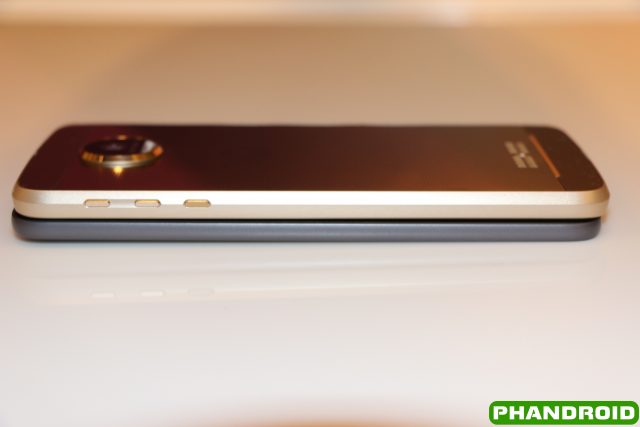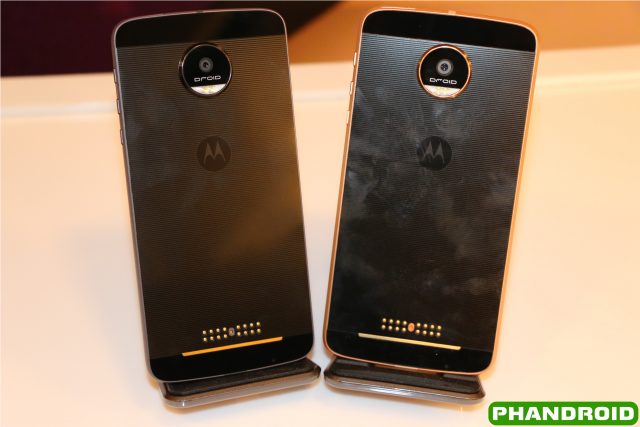
Hands-on: The Moto Z Droid vs the Moto Z Force Droid
Motorola and Verizon held a joint press event today in New York City where the companies introduced the Motorola Moto Z Droid and the Motorola Moto Z Droid Force. These devices were first introduced at Lenovo Tech World, and surprised everyone with their modular designs that are done a bit differently than expected.
As for what’s powering these bad boys, the specs are mostly the same, with a few differences here and there. Both devices feature a 5.5-inch QHD display with a Snapdragon 820 processor, 4GB of RAM, 32GB or 64GB of storage, microSD card support (for up to 2TB!) and Android 6.0 Marshmallow. While the Moto Z Droid features a 2,600mAh battery and a 13MP rear-facing camera, the Moto Z Droid Force packs a 3,500mAh battery and a 21MP rear-facing camera.
The devices are both sleek, sexy and pack a pretty formidable punch, and we were able to get our hands on both of them.

The Moto Z Droid is the thinner phone of the two, measuring in at only 5.2mm, making it the thinnest flagship on the market. Although the device features a 5.5-inch display, you don’t really recognize the “phablet” size due to how thin and light the Moto Z Droid is.
As for the Moto Z Droid Force, this device measures in at 7mm with the same 5.5-inch display. Due to the thickness added to compensate for the larger battery, and thicker, ShatterShield display, the Moto Z Droid Force feels more like a device we’re accustomed to using.
The back and the sides of these devices are machine-grade aluminum, with glass at the top and bottom of the rear panel for the various antennas and other accoutrements. Nestled at the bottom are the powerful magnets that make the world go ’round and hold the various modules in place.

Two beautiful devices plagued by fingerprints
However, there’s one caveat with the back panel: It’s a fingerprint magnet. We thought the glass panels on the Galaxy S7 and Galaxy S7 Edge were bad, but Motorola may take the cake in this regard. Luckily, you will be able to attach various Moto Mod covers, or Mods to the rear so this really won’t require you to clean your device all that often.
Both devices feature a USB Type-C charger found nestled between the bottom-firing speakers. Motorola/Lenovo forewent the addition of a 3.5mm headphone jack, in favor of saving some space and requiring users to rely upon an included USB Type-C to 3.5mm headphone jack adapter. This marks the first phone released in the U.S. that will not include a 3.5mm headphone jack, a trend we’ll likely be seeing in future device releases.
We’ll be putting these devices through the ringer to see how well they stand up in your day to day lives, so be sure to keep your eyes peeled for the full reviews. If you have any questions in the mean time, feel free to let us know.
